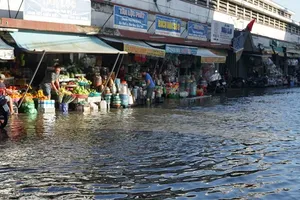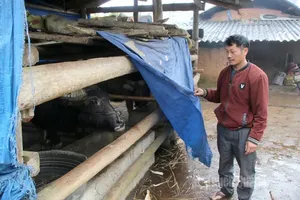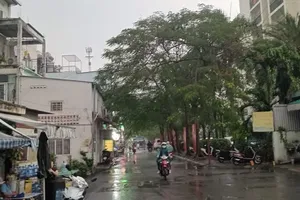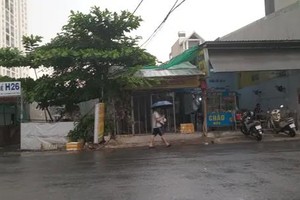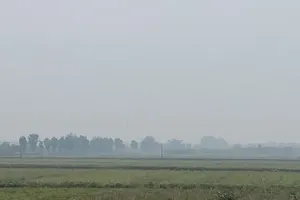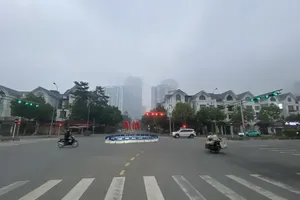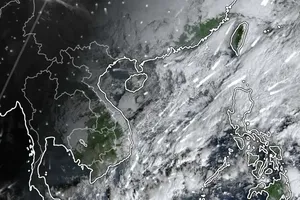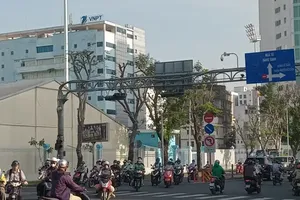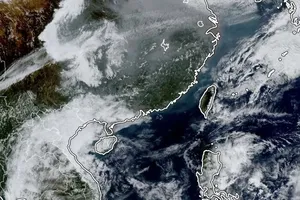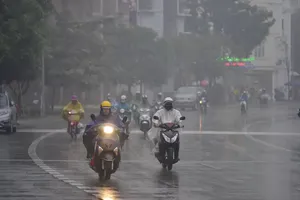
In the two provinces of Ha Giang and Lao Cai, sheets of rain have caused severe flooding in various locations, the most serious of which is Viet Lam Commune in Vi Xuyen District of Ha Giang Province, with a depth of nearly 1m due to the precipitation of over 400mm. Military personnel, police officers, and militia forces have been mobilized to assist residents in those locations as well as in Ha Giang City.
In Lang Son Province, sudden surge in stream levels, carrying mud and trash, has inundated several homes in Nhat Hoa Commune of Bac Son District, leaving many families unable to relocate their belongings in time.
Local disaster response agencies in Cao Bang Province have issued warnings of flash floods and landslides.
Meteorological authorities have reported significant rainfall amounts at various measurement points, including 325mm in Viet Lam Commune (Ha Giang Province), 127mm in Bac Son District (Lang Son Province), 123mm in Don Phong Commune (Bac Kan Province), 117mm in Chan Nua Commune (Lai Chau Province), and 116mm in Thuong Lam Commune (Tuyen Quang Province).
Hanoi and the provinces of Hoa Binh, Phu Tho, Vinh Phuc, Thai Nguyen, and Tuyen Quang have all experienced persistent rain, yet not intense enough to create flooding.
Normally, the peak of the rainy season in North Vietnam is from July to September; however, this year’s peak comes sooner and stronger, alternating with short-term heat waves.
Deputy Prime Minister Tran Luu Quang has just signed a formal dispatch asking all related ministries and state agencies to proactively respond to the heavy rains in the northern region. The dispatch emphasizes the importance of vigilance, close monitoring, and timely implementation of flood response measures to protect lives, minimize property damage, and safeguard production and livelihoods.
Warning about above-average rainfall in the localities of Quang Ninh, Hai Phong, Ha Giang, Lao Cai, and Cao Bang in June, meteorological experts have attributed the heavy rainfall in North Vietnam this year to the persistent presence of low-pressure troughs extending across the region. They have been influenced by a weather pattern that frequently brings heavy summer rains to central mainland Asia, known as Meiyu, which typically centers over southern China.
Between July and November each year, this Meiyu usually creates vast cloud bands stretching from Thailand and Laos through southern China to Japan. However, climate change has moved these cloud bands southwards, leading to torrential rain in North Vietnam. As the peak of Meiyu is from July to September, more intense downpours are expected this year.
The National Center for Hydrometeorological Forecasting issued warnings of landslide risks due to heavy rains in the provinces of Quang Tri, Quang Nam, Ninh Thuan, Dak Nong, Lam Dong, and Dak Lak, where rainfall has already been recorded or is expected in the coming days.
It is forecast that from this afternoon, the precipitation in North Vietnam will see a reduction.
Heavy rain and thunderstorms are expected to continue in the mountainous and midland areas of Northern Vietnam tonight, but with a gradual reduction in intensity. There is a risk of flash floods, landslides, and inundation in these areas.
Sunny weather is forecast for the whole Central region of Vietnam, with thunderstorms in the evening and at night.
The Central Highlands and Southern Vietnam are predicted to witness intermittent sunny times during the day. Heavy rain and thunderstorms will be seen at night, with a high possibility of tornadoes, lightning, hail and strong winds.
